In the Studio with Catherine Truman
In a new series presented in partnership with Guildhouse, we take you inside the studio of artist and Gray Street Workshop co-founder Catherine Truman, whose latest botanically-inspired creations are currently glowing in the Adelaide Botanic Garden.

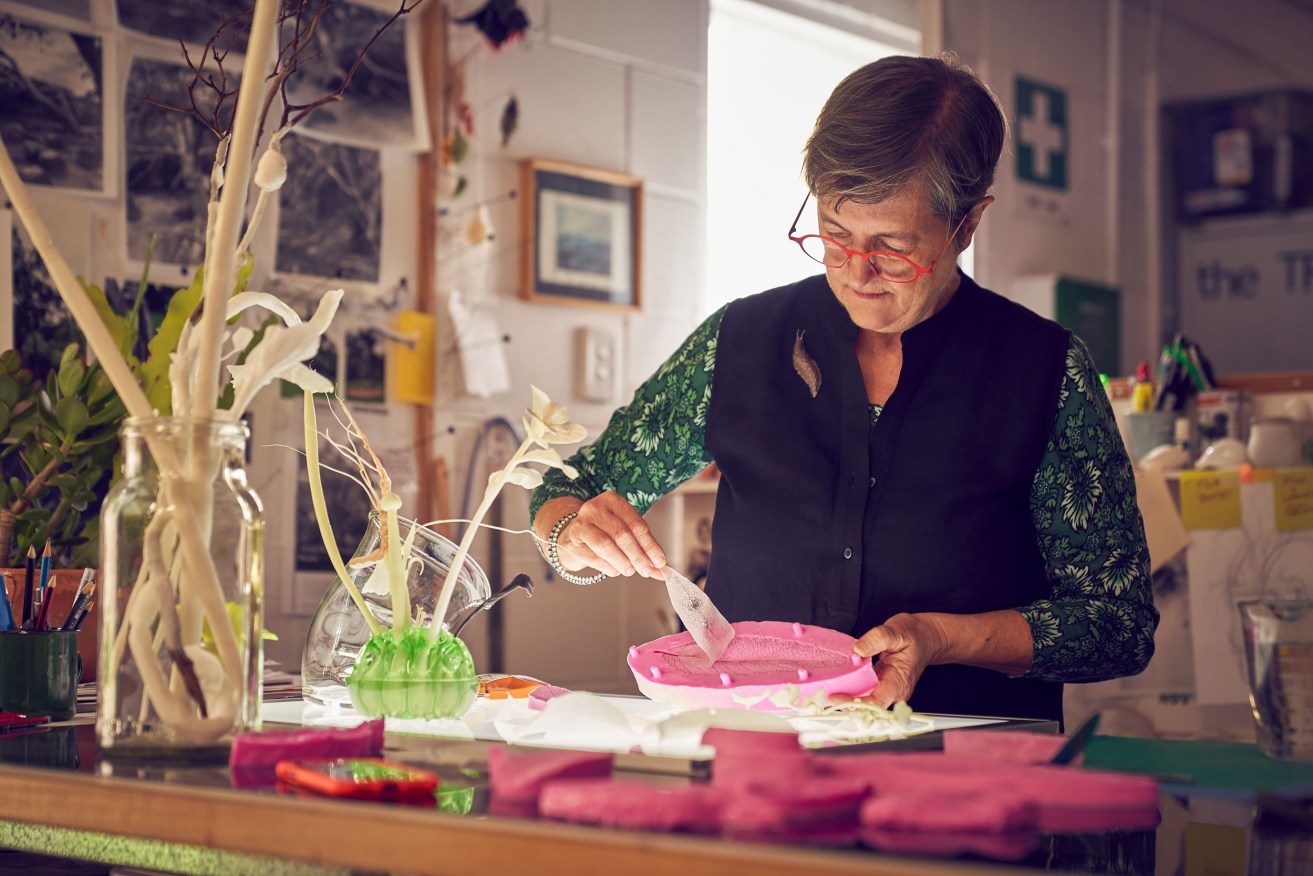
In the workshop: Catherine Truman's latest exhibition offers a snapshot of her ongoing experimentations with thermoplastics. Photo: Aubrey Jonsson
Artist Catherine Truman continues to find space to grow and evolve her practice at Gray Street Workshop, her creative home for the past 36 years.
“We did this crazy thing where my partner Sue [Lorraine] and I used to live in this house, and we thought, ‘it’s easier to find somewhere to live than a new workshop’,” Truman explains as she leads me into the converted Thebarton house that’s been Gray Street Workshop’s home since 2017.
It’s been a long time since Gray Street Workshop was located on Gray Street, with this latest move occurring when their city workshop and gallery space ran its course after 20 years.
“It’s worked out pretty well – apart from a bit of confusion, emotionally, to start with. We have dinner parties here and I still think I live here; I stand at the verandah and wave people goodbye, then realise I have to go home too.”
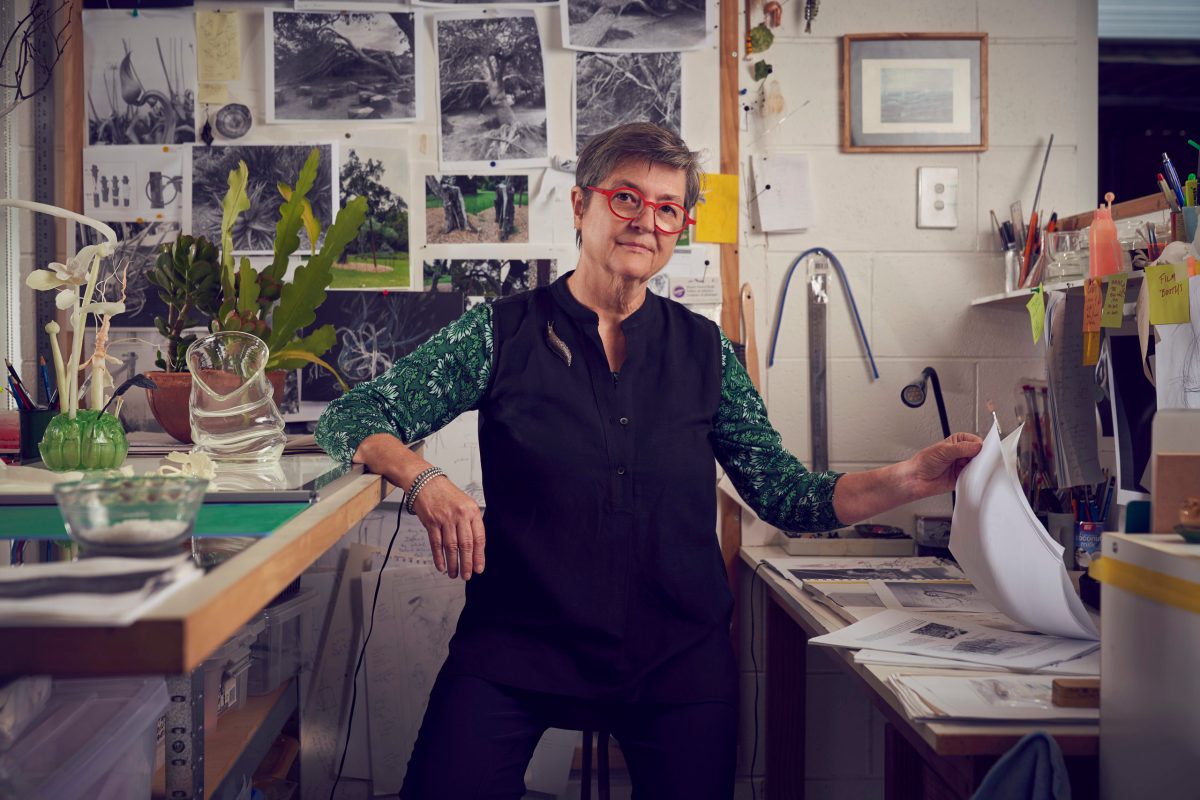
Catherine Truman in her workspace at Gray Street Workshop. Photo: Aubrey Jonsson
While Truman and Lorraine now live a few suburbs over, the feeling of a home away from home seems to be an important part of this incarnation’s charm. Truman’s patch of the large backyard workshop is orderly but lived-in, and teems with the evidence of an interdisciplinary approach which encompasses jewellery and objects, photography and film.
There are printouts of plants and human eyes pinned up around various experiments and works-in-progress that seem both familiar and unreal, a small light box, and a “non-traditional traditional” jeweller’s bench inspired by a spell in the ’90s studying carving in Japan.
“It’s always a fight between doing your head or your neck in, or your elbows,” she says of the raised, elliptical workbench.
“In Japan, everybody worked on the floor carving away, so when I came back I started to think about how the ergonomics were going to work… so I lowered the bench. That’s been a huge consideration for me, how I use my body in my practice – it’s kind of at the basis of my interest in anatomy. And my longevity, in all directions.”
Truman’s speech, like her work, is peppered with the overlapping imagery of the botanical and biomedical, informed by years spent collaborating with academics and researchers across various medical and scientific fields.
“I do go out and research in sometimes quite difficult and alien environments, and then use my workshop as a base for anchoring me,” she says, explaining that while entering the clinical and research environment helps expand her perspective, she also enjoys bringing her collaborators back to Gray Street — to tease out the edge of theirs.
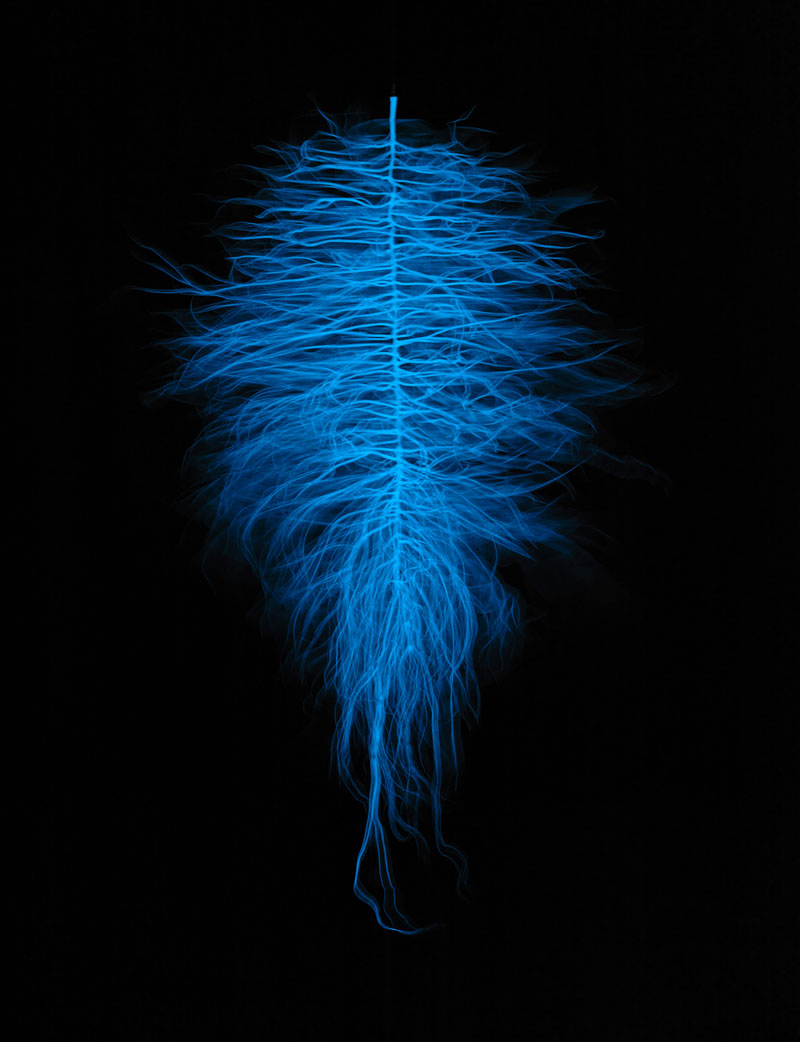
Catherine Truman’s work Restless Calm. Photo: Grant Hancock
While many of us were adapting to the idea of working from home last year, Truman bunkered down at Gray Street to create the appropriately titled Restless Calm – currently showing in The Deadhouse at Adelaide Botanic Garden as part of a broader collection of work entitled Shared Reckonings.
The exhibition offers a snapshot of Truman’s ongoing experimentations with thermoplastics – a malleable substance that can be gently heated with hot water and reformed by hand. Whether impregnated with photo-luminescent powder to absorb and emit light, or black paint that warps and cracks like bushfire-charred branches, it’s a medium Truman has used to meditate on the onset of climate change and ensuing ecosystem collapse.
Drawing on her experiments with an ophthalmic photographer, Restless Calm presents an inverted, glow-in-the-dark structure that evokes both the root and stem systems of a tree, and the unseen complexities of the human eye.
“It started life right here as this small tap root that kept on growing and growing,” she says, arriving at a soldering bench overlooking the same garden where she and Lorraine tied the knot soon after marriage equality became law.
“Luckily we were in lockdown most of the time, so it was mainly Sue and I working here, but when people started to come back here they were saying, ‘When… do you think that piece will be finished? So we can actually get to some soldering!’,” she laughs.
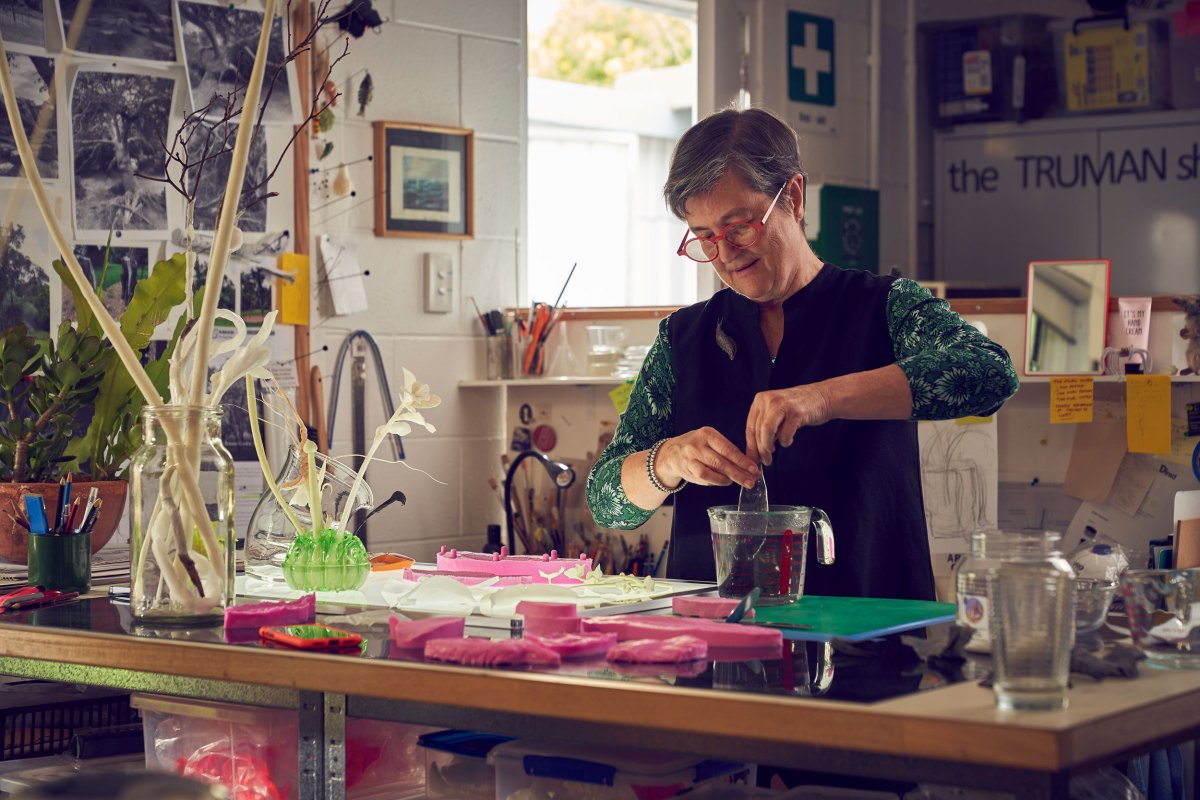
Thermoplastic can be heated with hot water and reformed by hand. Photo: Aubrey Jonsson
Gray Street, like Truman’s work, has grown and evolved since she, Lorraine and original co-founder Anne Brennan began three decades ago.
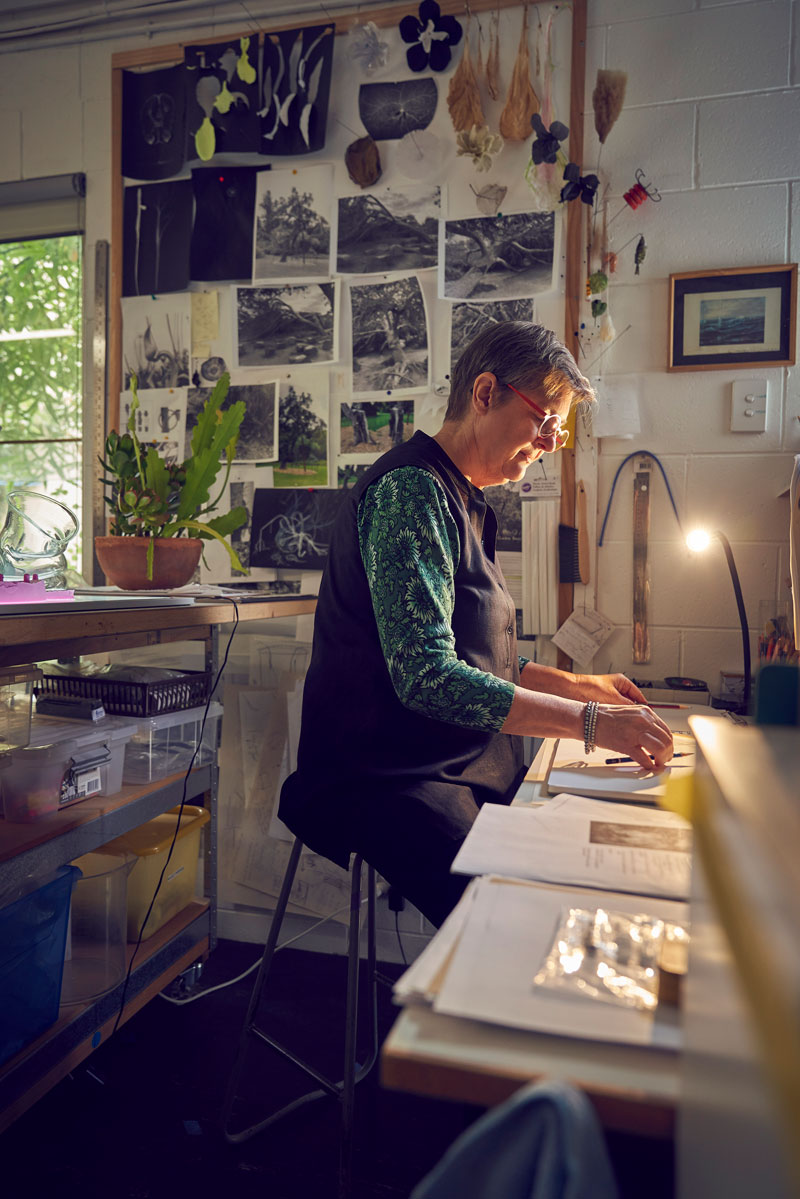
Truman, surrounded by printouts and works-in-progress. Photo: Aubrey Jonsson
“I’m really thankful that it’s gone on for so long and it’s been so well supported by everyone who’s been through it. We’re seen as a bit of an institution, which comes with a lot of responsibility – but never any actual monetary gains,” she laughs, before noting Arts South Australia, the Botanic Garden and Adelaide Festival’s support for Shared Reckonings. “We tick along and pay the bills.”
With artists Jess Dare and Lisa Furno joining the pair as partners in recent years, Truman is both pleased and surprised that despite the challenges of today’s arts landscape, Gray Street remains as malleable – and revelatory – as the photoluminescent thermoplastic she often works with.
“I don’t know how many premises we’ve been in… over 36 years there would be five different places we’ve been in, and each time the workshop kind of grows a new limb – it’s like a plant, it adapts to where the sun shines from. That’s what we’ve felt about being in this place. It’s changed shape, and we’re always asking: what does it mean, what can we do next, how can we adapt?”
Catherine Truman: Shared Reckonings is at the Santos Museum of Economic Botany and The Deadhouse, Adelaide Botanic Garden, until May 2, 2021. Read more about Truman’s artistic practice on her website.
——–
In the Studio is a new regular series presented by InReview in partnership with not-for-profit organisation Guildhouse. The series will share interesting stories about South Australian visual artists, craftspeople and designers, offering insight into their artistic practices and a behind-the-scenes look at their studios or work spaces.




